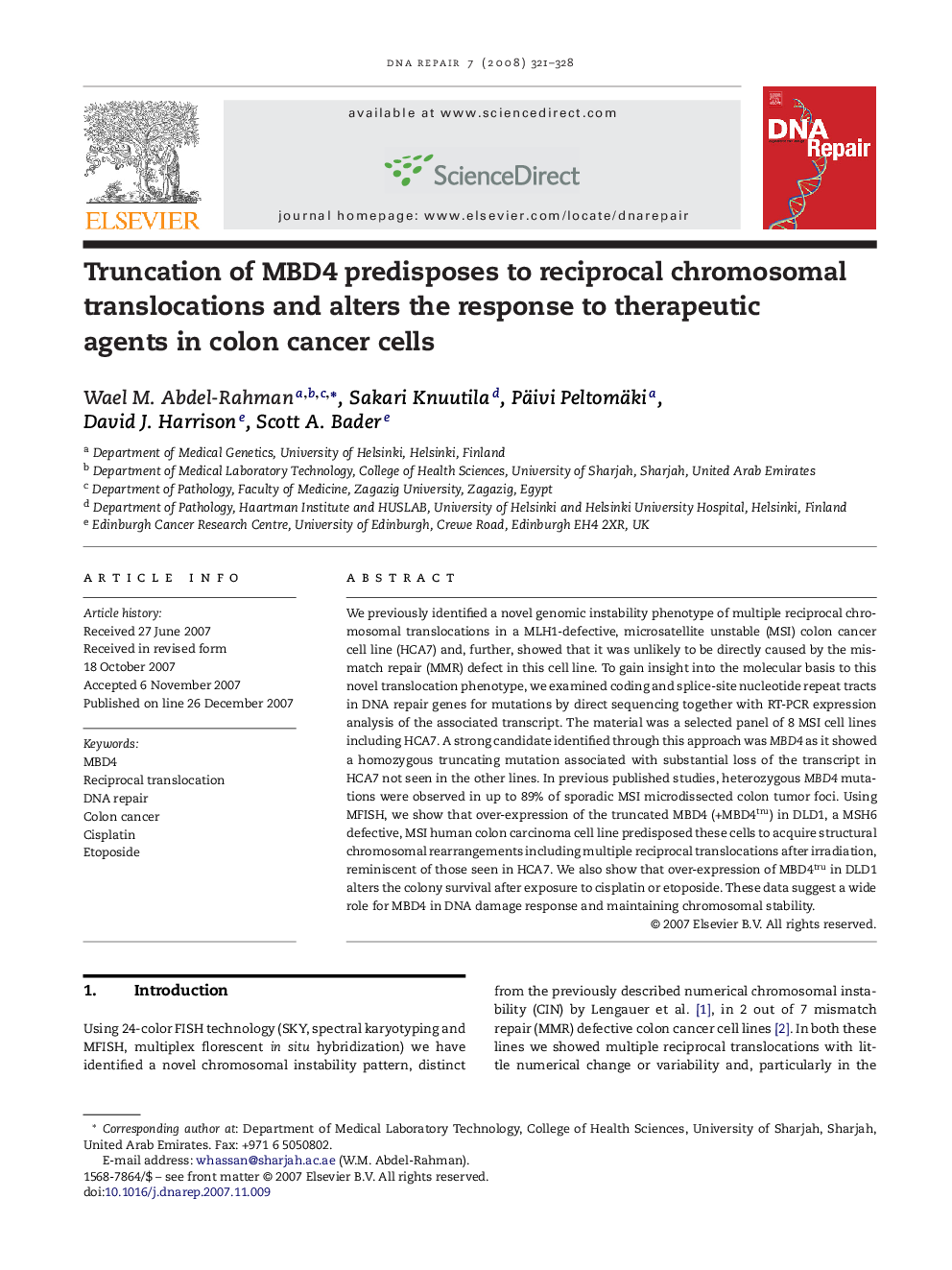| Article ID | Journal | Published Year | Pages | File Type |
|---|---|---|---|---|
| 1980864 | DNA Repair | 2008 | 8 Pages |
We previously identified a novel genomic instability phenotype of multiple reciprocal chromosomal translocations in a MLH1-defective, microsatellite unstable (MSI) colon cancer cell line (HCA7) and, further, showed that it was unlikely to be directly caused by the mismatch repair (MMR) defect in this cell line. To gain insight into the molecular basis to this novel translocation phenotype, we examined coding and splice-site nucleotide repeat tracts in DNA repair genes for mutations by direct sequencing together with RT-PCR expression analysis of the associated transcript. The material was a selected panel of 8 MSI cell lines including HCA7. A strong candidate identified through this approach was MBD4 as it showed a homozygous truncating mutation associated with substantial loss of the transcript in HCA7 not seen in the other lines. In previous published studies, heterozygous MBD4 mutations were observed in up to 89% of sporadic MSI microdissected colon tumor foci. Using MFISH, we show that over-expression of the truncated MBD4 (+MBD4tru) in DLD1, a MSH6 defective, MSI human colon carcinoma cell line predisposed these cells to acquire structural chromosomal rearrangements including multiple reciprocal translocations after irradiation, reminiscent of those seen in HCA7. We also show that over-expression of MBD4tru in DLD1 alters the colony survival after exposure to cisplatin or etoposide. These data suggest a wide role for MBD4 in DNA damage response and maintaining chromosomal stability.
